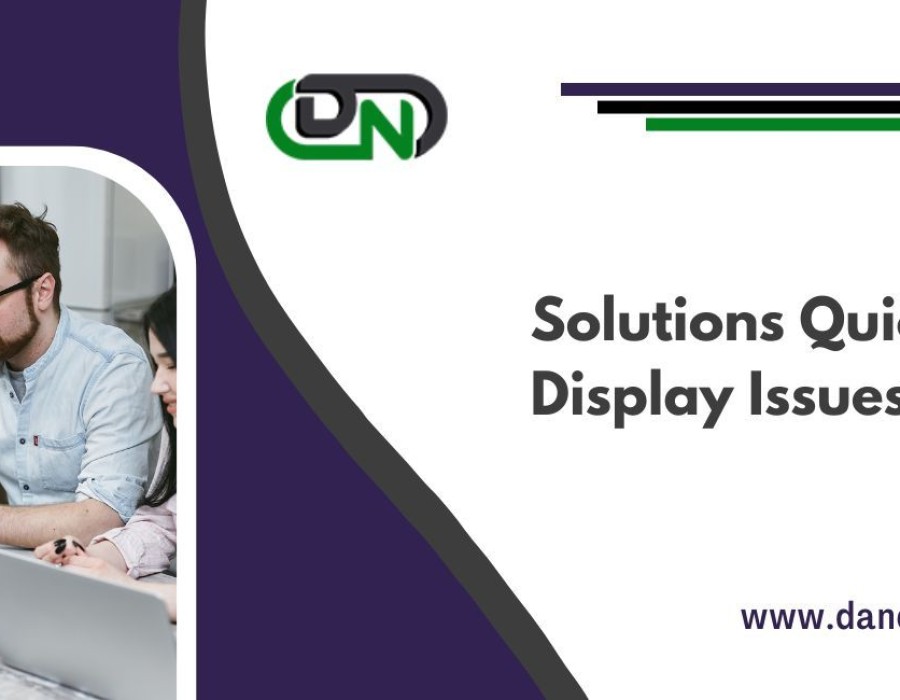Introduction
QuickBooks Desktop is widely used for managing finances and accounting, but like any software, it can sometimes encounter display issues. These problems, such as blurry text, missing buttons, or misaligned windows, can be frustrating and disruptive. In this guide, we will explore the most common QuickBooks display issues and provide easy-to-follow steps to fix them. Let’s dive in and get your QuickBooks interface working smoothly again.
Common Display Issues in QuickBooks Desktop
Some of the most frequent display issues reported by QuickBooks users include:
- Blurry or Distorted Text: Text in QuickBooks appears fuzzy or unclear, making it difficult to read and navigate.
- Disproportionate Windows: The windows in QuickBooks may appear too large or too small, or parts of the screen may be cut off.
- Missing Buttons or Icons: Important buttons or icons might not be visible, preventing users from accessing key features.
- Flickering or Flashing Screens: The QuickBooks screen may flicker or flash, causing distractions and discomfort.
- Slow Performance Related to Display: QuickBooks may run slowly or become unresponsive due to display settings or configuration issues.
Causes of QuickBooks Display Issues
Display problems in QuickBooks Desktop can arise for several reasons:
- High DPI Settings: QuickBooks may have trouble scaling properly on high-resolution monitors with high DPI settings.
- Outdated Graphics Driver: An old or faulty graphics driver can cause QuickBooks to misbehave visually.
- Incompatible Display Resolution: Your system’s resolution may not match QuickBooks’ optimal display requirements.
- Multiple Monitor Setup: Using multiple monitors with different resolutions can confuse QuickBooks’ interface scaling, leading to display issues.
- Outdated Version of QuickBooks: Running an outdated version of QuickBooks can result in bugs or display problems.
Steps to Fix QuickBooks Display Issues
1. Adjust Display Settings on Your Computer
The first thing you can try is adjusting your display settings to ensure compatibility with QuickBooks:
- Right-click on the desktop and select Display Settings.
- Under Scale and Layout, set the scaling to 100% (this is the recommended setting for QuickBooks).
- Check your screen resolution and set it to 1920x1080 or higher, depending on your monitor.
2. Disable Display Scaling on High DPI Settings
If you're using a high-resolution monitor, QuickBooks may not display correctly due to DPI scaling issues. Here's how to fix it:
- Right-click the QuickBooks Desktop shortcut and select Properties.
- Click the Compatibility tab.
- Check the option Disable display scaling on high DPI settings.
- Click Apply and then OK.
- Restart QuickBooks to see if the issue is resolved.
3. Update Your Graphics Driver
Outdated graphics drivers are a common cause of display issues. Updating your graphics driver can often resolve these problems:
- Press Windows + X and select Device Manager.
- Expand the Display adapters section.
- Right-click your graphics card and choose Update Driver.
- Select Search automatically for updated driver software and follow the instructions.
- After updating, restart your computer.
4. Run QuickBooks in Compatibility Mode
If you’re still experiencing display problems, running QuickBooks in compatibility mode may help:
- Right-click the QuickBooks Desktop shortcut and select Properties.
- Go to the Compatibility tab.
- Check the box that says Run this program in compatibility mode for and select an older version of Windows (such as Windows 7 or 8).
- Click Apply and OK.
- Restart QuickBooks and check if the display issues have been resolved.
5. Use QuickBooks Tool Hub
QuickBooks Tool Hub is a free diagnostic tool from Intuit designed to fix common software issues. To fix display problems:
- Download QuickBooks Tool Hub from Intuit’s official website.
- Open the tool and select the Program Problems section.
- Click on Quick Fix my Program or QuickBooks Program Diagnostic Tool.
- Follow the instructions to resolve any display-related issues.
6. Reduce the Number of Open Windows in QuickBooks
Having too many windows open in QuickBooks can sometimes cause performance and display issues:
- Go to the Window menu in QuickBooks and select Close All Windows to free up resources and improve performance.
7. Check for QuickBooks Updates
Running an outdated version of QuickBooks may lead to bugs and compatibility issues. To check for updates:
- Open QuickBooks Desktop and go to Help > Update QuickBooks Desktop.
- Click Update Now and then Get Updates.
- Restart QuickBooks after the update to see if the display issue has been resolved.
Preventing Display Issues in the Future
To avoid encountering display issues in QuickBooks Desktop in the future, follow these best practices:
- Regularly Update Graphics Drivers: Keeping your graphics drivers up to date ensures smooth performance.
- Monitor Settings: If you use multiple monitors, ensure they have similar resolutions to avoid scaling issues.
- Keep QuickBooks Updated: Always use the latest version of QuickBooks Desktop to avoid bugs and compatibility issues.
- Avoid High DPI Settings: Stick to recommended display scaling settings to prevent blurry text or misaligned windows.
Conclusion!
Display issues in QuickBooks Desktop can be frustrating, but they are usually easy to fix. Whether it’s blurry text, flickering screens, or missing buttons, the solutions range from adjusting display settings to updating drivers or using compatibility mode. By following the steps outlined in this guide, you should be able to resolve most display issues and continue using QuickBooks without interruption. Remember to keep your system and QuickBooks updated to prevent these problems from occurring in the future.





Comments